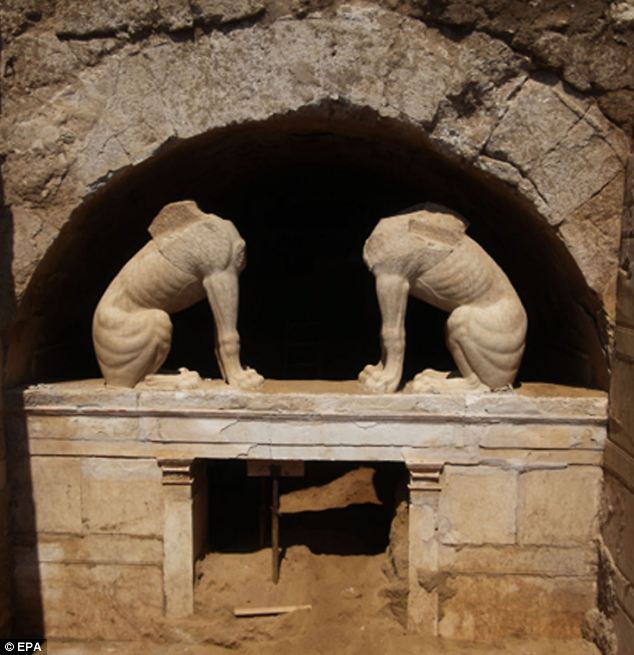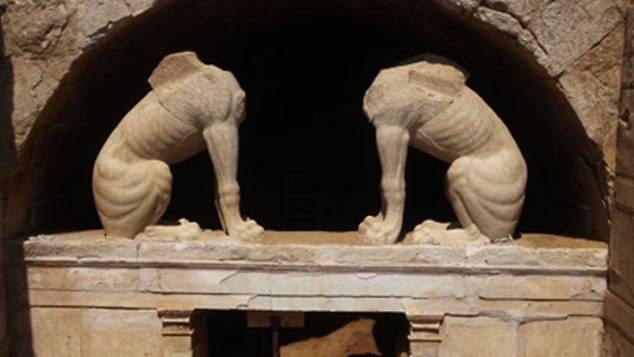Could Greece’s mystery tomb lie intact? Well-preserved headless sphinxes
Source: dailymail.co.uk
Well-preserved headless sphinxes hint that grave dating back to Alexander the GreatArchaeologists are hopeful that an ancient mound in northern Greece could hold the untouched remains of an important senior official from the time of Alexander the Great.
Excavations at the ‘incredibly important’ tomb have revealed a pair of sphinxes guarding the grave’s entrance.

The two sculptures were found under an arch at the Kasta Tumulus site near ancient Amphipolis in Macedonia, Greece.
At 1,935ft (590m) wide, it is the largest burial of its kind ever discovered in Greece.
Greece’s Culture Ministry said that most of the earth around the mythical creatures has now been removed to reveal part of a marble lintel with frescoes.
Chief archaeologist Katerina Peristeri, believes that the monument being uncovered is a unique tomb, not just for Greece but for the entire Balkanic peninsula, and described it as being of ‘global interest’.
Prime Minister Antonis Samaras, who visited the tightly-guarded site two weeks ago, said the discovery ‘is clearly extremely important’ and dates between 325 and 300 B.C.
Alexander, who started from the northern Greek region of Macedonia to build an empire stretching as far as India, died in 323 B.C. and was buried in Egypt.
His fellow royals were traditionally interred in a cemetery near Vergina, to the west, where the lavishly-furnished tomb of Alexander’s father, Philip II, was discovered during the 1970s.
But archaeologists believe the Amphipolis grave, which is surrounded by a surprisingly long and well-built wall with courses of marble decorations, may have belonged to a senior ancient official.
Dr Peristeri has argued the mound was originally topped by a large stone lion that was unearthed a century ago, and is now situated around 3 miles (5km) from the excavation site.
Geophysical teams have identified there are three main rooms within the huge circular structure, news.com.au reported.
In the past, the lion has been associated with Laomedon of Mytilene, one of Alexander’s military commanders who became governor of Syria after the king’s death.
‘The excavation will answer the crucial question of who was buried inside,’ Mr Samaras said.
[...]
Read the full article at: dailymail.co.uk






















